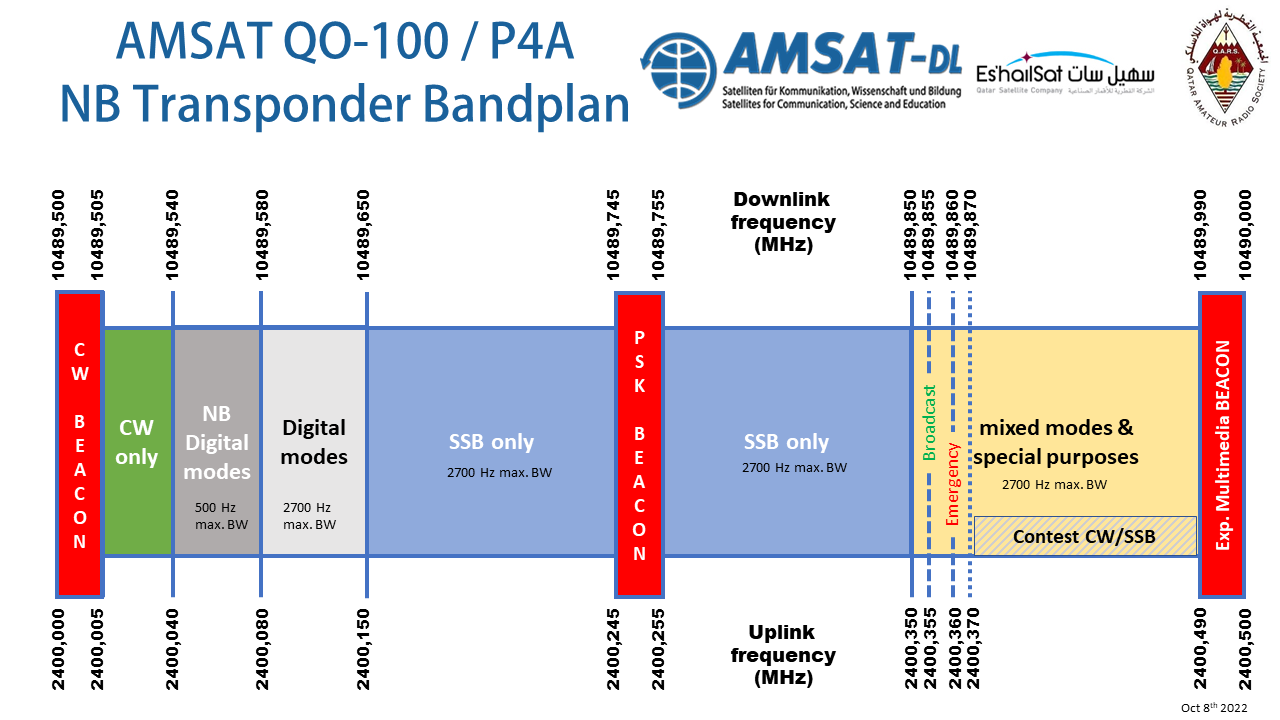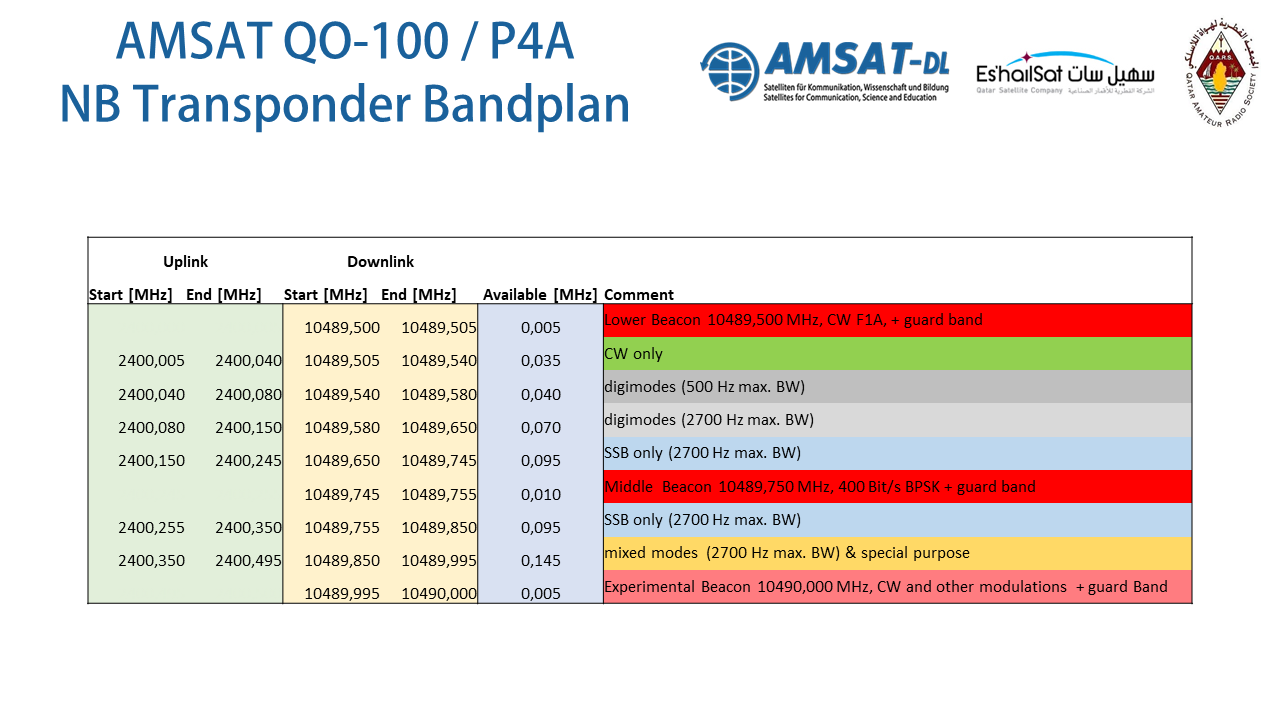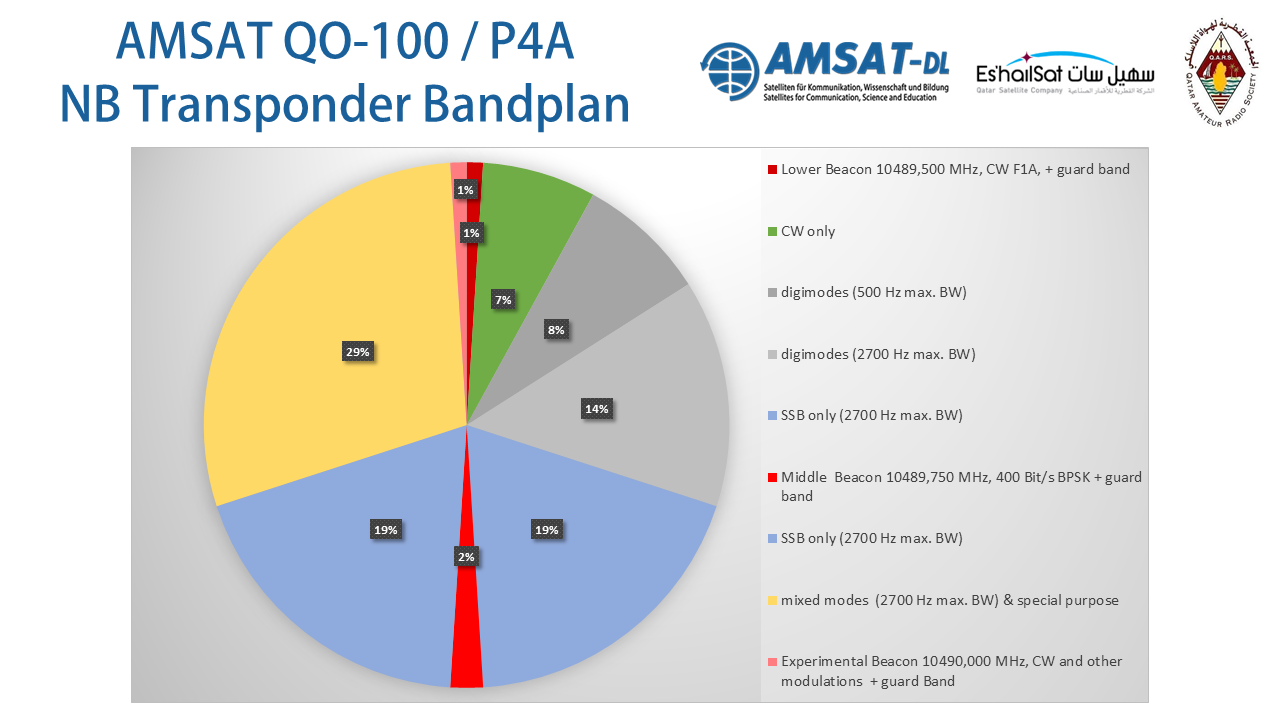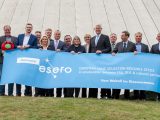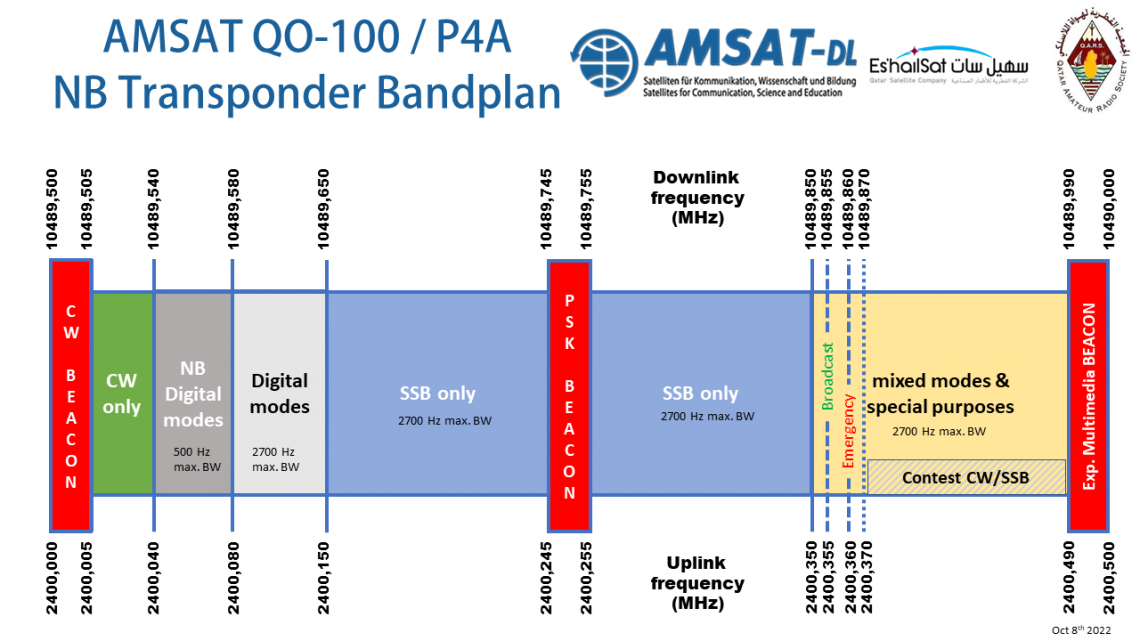
New QO-100 band plan
December 23, 2020Just in time for the 1-year anniversary of the successful commissioning of the two transponders of Qatar-OSCAR 100, the capacity of the NB transponder was expanded from around 250 KHz to just under 500 KHz!
Attentive observers have of course lalready noticed that the passband of the NB transponder is actually larger than previously published.
All the more pleasing fact is that practically 99.9% of the radio amateurs also kept to the previous band plan, which is limited downwards by the CW beacon and upwards by the PSK beacon.
The bandwidth of both the NB and WB transponders is determined by so-called surface acoustic wave filters in the S-band receiver, which are identified as SAW in the block diagram of the transponder. Incidentally, there is a common misconception among radio amateurs that QO-100 is merely a commercial TV transponder that has only been converted to our frequencies. But this is far from the case, the entire AMSAT payload was designed and built specifically to our specifications and wishes. Only a few components could be reused 1:1, this includes mainly the TWTA. The uplink and downlink antennas were also specially fitted for us to illuminate the entire visible hemisphere and not just a spot beam to Europe. In the commercial sector, one usually works with much larger bandwidths than with our transponders. Especially with the narrow NB transponder, certain technical limits have been reached here, so that the bandwidth has turned out to be somewhat larger and the edges are not as steep.
We only became aware of this during the in-orbit test phase. However, since the CW and PSK beacons and LEILA are not generated in the satellite but at the ground station as part of the LEILA box and these were designed for the originally only 250 kHz wide transponder, we had initially stuck to the original plans and saw no reason to change anything.
In fact, widening the transponder at an earlier stage was considered to be contra-productive. Experience from previous satellites has shown that users are more likely to get “lost” and not be able to find what they are looking for if there is too much space.
Now, however, in recent months the operation and occupancy of the transponder, especially in the SSB range, have increased significantly. Also, the use of SDRs with waterfall graphs help users find each other faster (and also notice black sheeps faster).
On the other hand, however, there have been increased incidents of alleged pirates or ignoramuses using the area above the PSK beacon contrary to the band plan. Partly unfortunately also with very strong FM signals, which are taboo on the NB transponder anyway.
Unfortunately LEILA could not do anything here with her warning signal, because she was limited technically only to the 250 kHz between CW and PSK beacon. On the other hand, it would have been a bit strange if LEILA would broadcast outside the official band schedule.
So it was also a nonsensical and untenable state of affairs in the long run that pirates broadcast there undisturbed, while conforming users virtually submit to a celibacy. This allowed the pirates to feel rather undisturbed, if not unobserved.
No changes to the satellite are required to expand the transponder range. For this, however, LEILA must be technically upgraded on the ground, since the current hardware based on the Red Pitaya is not designed for more than 250 KHz and is at the edge of its capabilities.
So, in addition to some software changes, new hardware was built based on ADALM-Pluto so that LEILA could cover the full 500 kHz and generate appropriate marker tones when the uplink power was excessive. There were also requests for the CW beacon and an additional engineering or experimental beacon. Due to the A1A modulation with the pauses between the single points and dashes of the CW beacon, it was sometimes a little bit difficult to align the antenna optimally on the basis of this signal. There have been several requests to introduce constant carrier frequency shift keying instead, as is the case with many terrestrial beacons. This is now also being implemented with the new band plan.
The upper beacon with the 400 bit/s PSK modulation is essential for many users of QO-100, because it serves mainly users of the “SDR-Console” of Simon Brown G4ELI (SDR-Radio), or comparable programs, for frequency stabilization of unmodified PLL-LNBs for reception. Since the PSK beacon on the ground is very frequency accurate due to a GPS reference, the drift of the LNB in the SDR receiver can be compensated automatically. Of course we want to keep this, but it becomes the new “center beacon” in the middle of the transponder passband. SDR Console users only need to adjust the new frequency in the Geostationary Satellite Beacon configuration. This is already prepared in the current version SDR-Console. We have placed the PSK beacon in the middle of the transponder so that SDR receivers with a bandwidth below 500kHz can continue to use this function.
A new feature is the future upper beacon, which will be an experimental beacon. At the beginning with CW or PSK, later with sophisticated modulation and efficient protocols, which should enable reception with extremely weak signals. It should be possible to hold the bare LNB in the direction of QO-100 to receive data.
As before, the lower and upper beacons limit the permissible transponder range.
In addition to extended ranges for the various operating modes, more space is also provided in particular for “mixed mode” and other special operating cases. Here, in addition to reserved frequencies for emergency radio operation, more experiments are to be made possible.
All this, however, only with a maximum bandwidth of 2.7 kHz! Automatic operation requires a special license from the local licensing authorities and must be coordinated in advance with the operator; this task is performed by AMSAT-DL on behalf of QARS and Es’hailSat. In order to take user behaviour into account, we have almost doubled the SSB range in particular.
Mario DL5MLO and Jens DH6BB made some modifications at our ground station DK0SB in Bochum on February 14, 2020 and put the new LEILA hardware into operation. Beacons and LEILA have been broadcasting from AMSAT-DL in Bochum since the official launch 1 year ago.
The new band plan is effective immediately.



